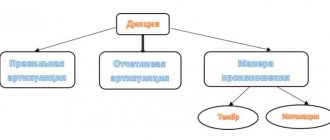Often the result of undertakings is largely determined by the ability to convince people and recognize our opinion. Bringing this to life is often not so easy, even if we are right and sane.
What a man is, such is his speech. Socrates
What is belief?
Persuasion is a way to prove your position, point of view in such a way that the interlocutor accepts it and acts in accordance with it.
Persuasion is used both in daily informal dialogue and when talking with colleagues, in the work team, with partners (business communication).
The goal of persuasion is to prove the correctness of one’s own positions and justify their effectiveness. A person must understand that this is what needs to be done, because it is more profitable and more effective.
Persuasion is always inseparable from the concept of persuasibility, the ability of the interlocutor to accept the partner’s point of view.
While some can justify their position logically, demonstrating the benefits, resorting to the opinion of experts, then others will not succeed in any of the ways.
Since this type of people cannot engage in constructive dialogue , are not able to perceive information from the outside and consider their own opinion to be the only correct one.
Suitable or not?
This sample public speaking text follows all the rules. Such a short speech fully reveals the topic of the video presentation on the YouTube channel. It tells about the participants, the location of the interview, the questions that were raised and the general mood that was present during the conversation.
At the end of the press release, the speaker invites listeners to watch the full version of the video. Although the ending can be supplemented with one more sentence or two, saying that the interview turned out to be successful and informative for everyone.
Structure
Belief is divided into 4 factors:
- Inductor . This is the sender of the information message, the person who convinces and conveys information. The success of the entire process partly depends on the personality of the inductor. If a person is pleasant to the interlocutor, then there is a high probability of accepting the point of view. It can be pleasant both physically (external attractiveness) and psychologically (respect for opinion, admiration for intelligence, when a person logically argues a position). The social factor, the authority of the individual in society, also plays a role. If the speech is given by a well-known person who is competent in the topic that he is discussing, trust automatically arises in him due to his significant authority. The persuasive skills of the inductor, his ability to choose the context and format of communication depending on the person also have an impact.
- Message .
The information that the inductor operates with for the purpose of persuasion. The better the inductor understands the interlocutor, the better he can adapt to his psyche and choose the right method of persuasion. The format of the message depends on the ability of the interlocutor to receive a certain type of information. - Message movement. In this case, we understand the analysis of what the interlocutor said, whether the information reached him. If he started to think about it, then he got it. This is influenced both by the inductor’s ability to operate with facts and other methods, and by a person’s ability to perceive information and cognitive activity. Cognitive activity is expressed in the search and acceptance of new data, in the ability to change one’s point of view in connection with newly acquired knowledge, as well as in a person’s curiosity and desire to obtain new information.
- Recipient .
A person who is persuaded. The success of communication depends on his character, social status, and personal values. For example, there is a type of people whose values are a constant search for benefits. Therefore, the message must appeal to the fact that if a person acts in a certain way, his situation will improve. For example, “Go to work on Saturday. The boss values people who are efficient and loyal to the company, so he might consider you for a promotion next month.” Here the manager (inductor) talks about a significant benefit for the employee (recipient), and the latter understands what is best for him to do. Other people are socially dependent and pay attention to the opinions of others. In this case, the message “Most colleagues agreed to work on the day off” can be effective. The recipient will not want to go against the opinion of the overwhelming majority, to oppose himself to the team, and therefore will agree.
Principle 2. Focus on the listener
Any audience adheres to some attitudes. Attitude is the audience’s feelings associated with some occasion, object, person, question, etc. Attitude is a kind of opinion. For example, the phrase “I believe that it is necessary to seriously study foreign languages” means that a person has a positive attitude towards mastering foreign languages.
Persuasive speech obliges the speaker to find out what opinion the listeners hold on a specific issue. Correct analysis of the target audience helps to more adequately assess the chances of success of a public speech. Having collected all the necessary information about people’s orientation towards your installation, you can formulate a rough action plan:
- If your listeners have a positive attitude towards your attitude, that is, they share your opinion on a specific issue, then it is worth considering what you would like from them. Your job is to develop a specific speech plan that will help motivate people to take the action you want.
- If the audience's opinion is neutral or simply absent, you need to shape it, and in a light favorable to you. If people are not aware of the issue you are voicing, you need to inform them and then persuade them to your beliefs. If people have the necessary information, but take a neutral position, your task is to provide as many arguments as possible that support your point of view. With this strategy, getting your audience on your side won’t be difficult.
Separately, it is worth discussing a situation in which listeners do not agree with your point of view:
- If the audience does not accept your goal, but is moderate, not hostile, it is worth trying to win them over with the help of arguments and facts. Information must be presented objectively and concisely. There should be no vagueness, lies or understatement. Imagine yourself in the place of the listeners. A good speech is those words that, if not change the point of view to the opposite, then at least force skeptical people to begin to believe the speaker and consider his opinion.
- If the audience is hostile, any attempt to immediately change their minds through public speaking will most likely end in fiasco. In this case, it is better to approach the topic of conversation from afar, starting the speech with an insignificant but adequate proposal to people. You must show that even your small idea is worth something. Later, in another speech, you can invite people to move forward. It is likely that by this point they will already perceive you as a person who offers worthy goals.
But don't rely too much on speech alone. Sometimes even the best words do not lead to the desired goal if we are talking about a hostile audience.
Ways and methods
Methods of persuasion are used depending on the personality of the interlocutor and his attitude towards the speaker.
The mechanism of persuasion is understood as a series of actions aimed at changing the recipient’s point of view in order to achieve certain results from him.
Methods:
- Direct (fundamental). It consists of directly addressing the recipient, conveying information in its pure form.
- Evidence-based . In the interlocutor’s speech, the inductor finds gaps in knowledge of information or logical errors. And then he proves with facts why he is wrong. The method is used if the recipient does not have reliable data; the essence is to present counterarguments that prove the interlocutor’s erroneous judgment.
- Partially evidence-based . It is implemented in the case when the interlocutor is right only in part of his arguments. Then the persuader skips the discussion about the correct arguments and focuses on the erroneous ones.
- Accentuating . The inducer uses the recipient's point of view and addresses it. For example, “you yourself say...,”, “as you said,”. The method is aimed at finding common interests between interlocutors and agreeing with them.
- “,Yes, but...”. Manipulation, the essence of which is to agree with the arguments, but then argue that they are unprofitable. The inductor does not refute the interlocutor's point of view, but shows that it can lead to failure.
- Inversion (boomerang) method . The inductor does not refute the point of view, but uses the given facts against the interlocutor. The goal is to invert, turn the arguments “for” into arguments “against”.
- Persuasive speech. When there is a long monologue on an issue with a detailed presentation of arguments, emphasis is placed on key positions.
Most often, the speech is public, and therefore has a greater impact on each listener.
Technicians
Persuasion techniques are based on the psychological and social characteristics of communication.
The techniques described in this section do not resort to standard argumentation or manipulation of factors.
On the contrary, they are tied to emotions and manipulation of the interlocutor . Techniques:
- Sympathy . The goal is to please the person. People tend to agree with those who are similar to them. The technique is aimed at men, since the appearance of the interlocutor usually does not matter to them. To please a person, you can demonstrate agreement with his worldview, values, principles (sympathy at the level of reason, logic), as well as mirror (copy) posture, gestures, facial expressions, and smile often (sympathy at the emotional level).
- Reciprocity .
If a person owes you something or you have previously provided him with a favor, then the likelihood of persuasion increases. Since there was successful communication before this, trust and sympathy for you was formed. People tend to help those who have already helped them. The task is to remind about past help and cooperation. - Exclusivity . People pay attention to the scarcity or rarity of something. Therefore, one can appeal to the rarity of the opportunity in principle or in time. For example, you want to convince a person to buy a guitar. In this case, the offer of sale itself has exclusivity. You describe the properties of the instrument, its positive characteristics, good quality, “You won’t find such a decent thing for that kind of money anywhere.” This is a rarity in principle. “Besides, it’s the last day I’m selling it,” this is an illusion of limited time.
- Authority . Mentioning the opinion of someone who is respected in society or personally liked by the interlocutor. This could be a recognized expert (“,Scientists have proven”, “,A famous artist also believes”), society as a whole (“,The majority prefers...,”, “,90% agree with...,”).
Alexander I
To be effective, speech must be precise and expressive. And these may not always be large amounts of text. You can get your point across with a few strong sentences and vivid comparisons. For example, Alexander I’s public speech to the French ambassadors even before the start of the war sounded as follows:
“Here is small Europe, and this is big Russia (he shows all this on the map). In case of failure, you can retreat only to Paris, and I can run to the edge of Kamchatka! But at the same time, every meter of this land will be hostile to you, even the women will not stop fighting. Russia may lose some battles, but it will never be defeated.”
To say that the ambassadors left under the impression is an understatement. An example of the text of a public speech by Tsar Alexander I amazes readers today. There is not a drop of arrogance here, just facts served with the right “sauce.”
Rules for persuading your interlocutor
Methods and techniques of persuasion may be useless if a number of rules are not followed:
- Emotional calm . Persuasion is only possible if the information is successfully sent and received. Due to emotions, not only part of the data is lost, but also the attitude towards the inductor deteriorates, which ruins any arguments.
- Politeness and cultural communication.
The task of the persuader is not to demonstrate hostility or disdain towards the interlocutor. Therefore, the use of obscene language, ridicule, jokes, and rudeness is not allowed. - Argumentation . Confirm what is said with experience, facts, real evidence. You should not persistently push your point of view, otherwise the interlocutor will be negatively inclined and it will be more difficult to convince him.
Psychological aspects
The success of persuasion depends on the persuasiveness factor of a person , which consists of two components:
- Firmness of convictions . When a person is extremely confident in his views, they have been formed over a long period of time, confirmed by practical experience or widespread in the environment. In this case, it is difficult for a person to change his point of view, since the old attitudes are convenient and familiar.
- Ability to perceive new things. A person may be closed from external sources of data psychologically. He refuses new information and is rigid in his worldview. He does not want to change his position, even if he is given a detailed argument for its erroneousness.
The lower the persuasiveness, the more difficult it is to explain and the more difficult it is to inspire your interlocutor with your point of view.
Steve Jobs
A striking example of modern oratory are the speeches of Steve Jobs. Public speaking was definitely not his strong point - it was just a hobby, but he began every presentation of a new product with his own speech. Examples in its execution look like this:
These are just small fragments of one of his speeches. But how does a person motivate?
NLP technique
NLP (neurolinguistic programming), a way of influencing an interlocutor through emotions and personal beliefs . In everyday life, everyone is guided by their own beliefs (values). By changing the value, you can change human behavior. This is what NLP is aimed at.
NLP is widely used in advertising, negotiations, and active sales. The task is to say what is intended in a different form, manipulating consciousness.
For example, a man wants to dominate his wife, but does not speak openly (“You must obey me,”), but manipulatively (“Good wives obey the men they love,”), thereby achieving the desired effect .
Main part of the speech
The main part should be clear and rich
. It is necessary to break down the main thoughts, ideas and provisions into component fragments.
You also need to think about measured transitions that will show the connection between the individual parts of the speech.
Ways to convey the main content:
- Explaining arguments that can be verified.
- The point of view of professionals and experts in this field.
- A citation that brings information to life and explains it.
- Examples and real events that can clarify and depict the facts.
- A statement of personal experience, as well as theories.
- Statistics that can be verified.
- Reasoning and predictions about future events.
- Funny stories and anecdotes that meaningfully support statements.
- Precise or figurative comparisons, as well as contrasts, that illustrate a statement by demonstrating differences and similarities.
The human brain is a magnificent thing. It works right up to the minute you get up to give a speech. Mark Twain
Persuasive speech: examples of texts
Consider a situation where parents want to convince their child to receive higher education :
- “A good education allows you to earn a lot, make new acquaintances, and gain a high position in society,” (direct method).
- “Without education you won’t get a job anywhere, you’ll work in a bad position” (negative argumentation).
- “All your classmates are doing things, thinking about the future,” (appealing to the social majority).
The ability to persuade allows you to achieve your goals and influence people .
We recommend Robert Cialdini’s classic work, “The Psychology of Influence: Convince, Influence, Defend,” the book perfectly reveals methods of persuasion that can be applied immediately after reading.
The secret of persuasive speech from professionals:






